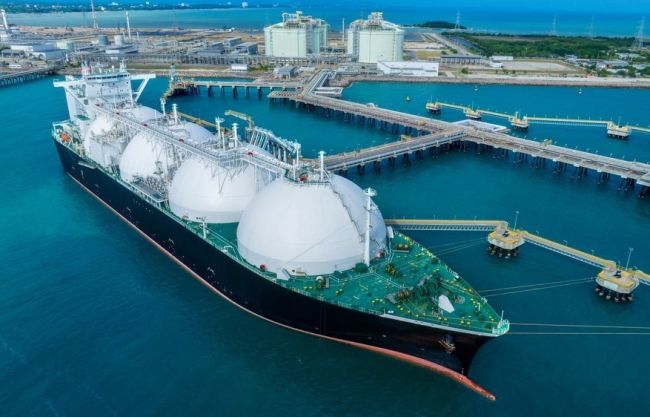A surge in U.S. LNG exports is looming, but the source and supply routes for the needed natural gas remain unclear.
Even the nation’s largest LNG exporter thinks massive new infrastructure projects will be essential to meet rising gas demand.
Cheniere Energy processes around 46 million tonnes per annum (mtpa) across two liquefaction and export facilities on the Gulf Coast: Sabine Pass in Cameron Parish, Louisiana, and Corpus Christi LNG, in the port of Corpus Christi, Texas. Another 14 mtpa of capacity was under construction as of the end of June.
Each day, Cheniere purchases around 8% of the natural gas produced across the country to feed into its two facilities, said Nishita Singh, vice president and general manager for Cheniere’s Corpus Christi LNG (CCL).
“So far, we have produced around 4,000 cargoes that have gone to over 45 countries and regions around the world,” Singh said at the Texas Independent Producers and Royalty Owners Association (TIPRO) summer conference. “We have more than 100 natural gas suppliers that feed into our facilities.”
Each LNG cargo holds approximately 3.4 Bcf of natural gas.
U.S. LNG exports are expected to almost double to around 30 Bcf/d by the end of this decade. Around 8 Bcf/d of new LNG export capacity is expected to come online over the next two years.
But those big numbers mean nothing if the gas can’t get from the wellhead into a pipe and down to the Gulf Coast LNG facilities that need it. Moving it through the midstream bottlenecks demands heavy lifting.
“It’s not about the availability of gas, it’s about transportation,” Singh said. “How are we actually going to get it there?”
Cheniere earned $9.82 billion in LNG revenues in the first half of the year, a 40% increase from about $7 billion in the first half of 2024, the company said in second-quarter earnings.
Now, other companies want a bigger piece of the LNG pie.
Several new export projects are expanding or under development along the Gulf Coast, including Plaquemines, Golden Pass, Calcasieu Pass, Port Arthur LNG and Rio Grande LNG.
Future projects awaiting final investment decisions (FID) include Commonwealth LNG, Woodside Louisiana LNG and Texas LNG.
This month, Cheniere reached substantial completion of Train 2 of CCL’s Stage 3 expansion project. The company’s second train first produced LNG in June.
Cheniere has signed several long-term contracts for its own gas supply, so it’s not worried about more competition coming online. But fresh projects will be scrounging for scarce pipeline capacity.
“It’ll be fascinating to see, depending on where these facilities are, how they’re going to be able to get the volume that they need,” Singh said.
Pipeline laterals branching off from existing midstream systems “may not be enough” to cover the massive demand, she said.
“You’re going to need some large lines that are going interstate to be able to do that,” she said.
RELATED
Antero: Graphing Appalachia’s 5-Bcf/d AI-Fueled Demand Growth
Permian gas
Cheniere will source every cubic inch of gas from anywhere it can, even as far north as Canada, Singh said, adding that most of the molecules that CCL receives at its liquefaction facilities come from the Permian Basin.
Cheniere and other LNG producers are looking at the Permian as a future supply source. The Permian has historically been an oil-focused basin but is becoming gassier. Deeper Permian benches also hold immense gas volumes waiting to be tapped.
But gas takeaway capacity out of the basin has been limited. To supply Golden Pass LNG at the Texas-Louisiana border, Kinder Morgan is building the 216-mile, $1.7 billion Trident Intrastate Pipeline.
Trident will deliver 1.5 Bcf/d of gas from the Permian and South Texas fields beginning in early 2027. Future expansions could boost Trident’s capacity to 2.8 Bcf/d.
Golden Pass LNG is a joint venture between QatarEnergy and Exxon Mobil.
RELATED
Operators Look to the Haynesville on Forecasts for Another 30 Bcf/d in NatGas Demand
Gas-on-gas competition
Gas buyers, from LNG producers to power utilities, are reportedly worried about their ability to source gas in the future.
During the 2025 NAPE Summit in February, former Expand Energy CFO Mohit Singh said the company is “sensing a lot of fear among end buyers about gas-on-gas competition, because where is that next molecule going to go?”
Will gas be hoovered up by the next massive LNG export facility co come online? Or directed into a power-hungry data center to power AI chatbots for Microsoft or Google?
Industrial buyers tied to the utility grid already fear shortages they say are choking productivity. And domestic power demand is growing as everyday citizens consume more gas-fired electricity to power EVs, air conditioners and other gadgets.
With so many unknowns, the “golden age” of U.S. LNG seems far from assured. Questions linger at every step: where the gas comes from, where it’s headed, how it will get there—and who will pony up the billions needed to connect it all.
RELATED
Expand CFO: ‘Durable’ LNG, Not AI, to Drive US NatGas Demand
